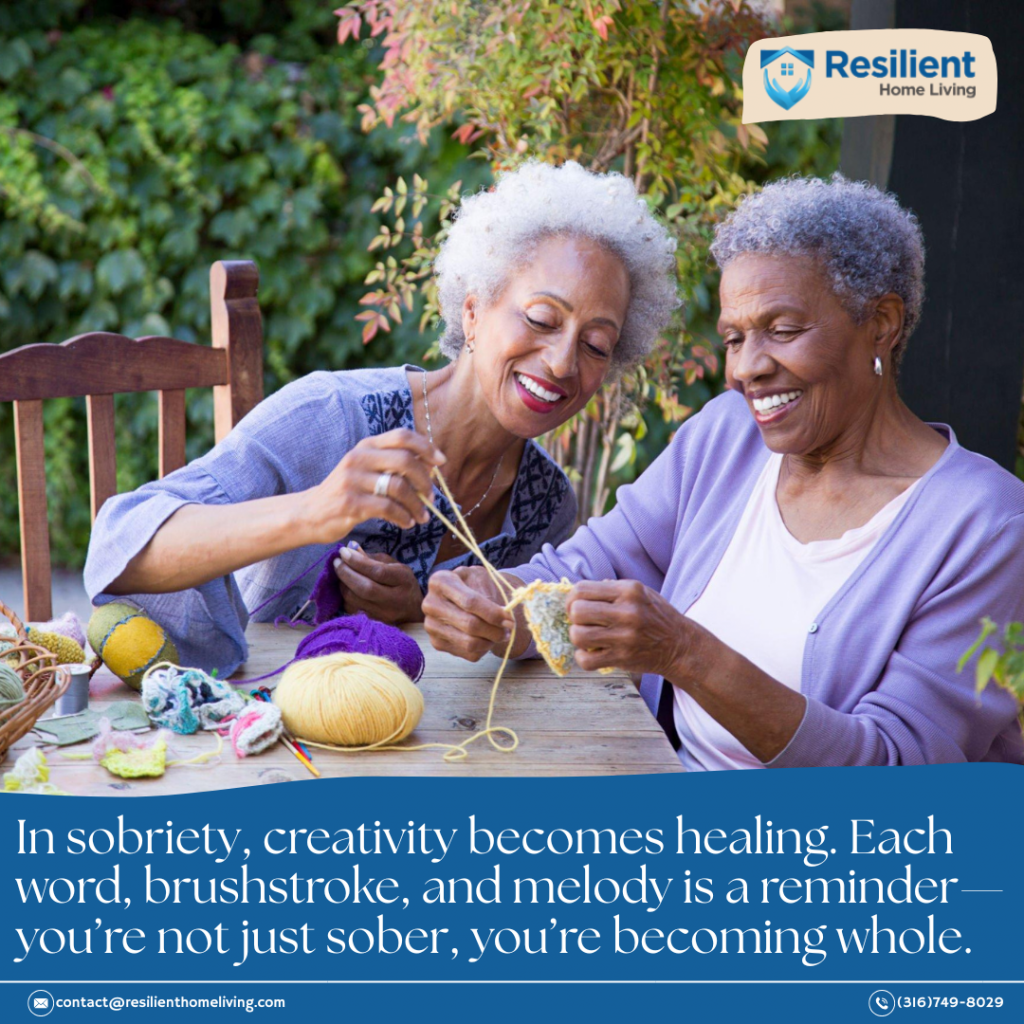Introduction
Sobriety often brings clarity—but it also brings space. Space to feel, to think, and to create. When the noise of addiction quiets down, many people discover a powerful current of creativity within them. Whether it’s painting, writing, or music, the act of creating becomes more than expression—it becomes healing.
Recovery isn’t just about removing substances; it’s about rediscovering yourself. And creativity is one of the most powerful ways to do just that.
1. Rediscovering the Creative Self
Addiction often silences creativity. In active use, your brain is preoccupied with survival—getting through the day, avoiding pain, seeking relief. But sobriety opens mental and emotional bandwidth. Suddenly, you have room to imagine, to explore, to make something from nothing.
Some people reconnect with old passions they’d left behind—painting, playing guitar, journaling. Others discover brand-new outlets: digital art, photography, spoken word. Creativity in sobriety isn’t about talent; it’s about expression without judgment.
The key is to let go of expectations. You’re not creating for perfection—you’re creating for connection, expression, and release.
2. Art as Emotional Processing
Recovery is emotional work. Art allows you to translate emotions into something tangible. A blank canvas or a lump of clay can become a safe container for feelings that are hard to name.
You don’t have to explain your art for it to be powerful. Sometimes, the process—mixing colors, shaping forms, watching something take shape—is the therapy.
Try keeping an “emotions sketchbook.” On days when words feel too heavy, use color, shape, or texture to express your inner world. Over time, you’ll begin to see patterns and growth in your art, just as you do in your sobriety.
3. Music: Healing Through Rhythm and Sound
Music has a unique ability to reach places words can’t. Whether you’re listening, playing, or composing, music taps into the emotional core of recovery.
For many in sobriety, music becomes both an anchor and an outlet. The rhythm of drumming, the lyrics of songwriting, or even singing alone in your room can help release bottled-up emotions.
If you used to associate music with drinking or using, create a new playlist for your sober life—a soundtrack for your growth. Choose songs that inspire strength, peace, or reflection. This helps reframe your relationship with music as something that lifts you, not triggers you.
4. Writing as Reflection and Reclamation
Writing gives voice to the parts of you that might have gone silent during addiction. Journaling, poetry, storytelling—all of these let you witness yourself without judgment.
Start small: a few sentences a day about what you’re grateful for, what you’re feeling, or what you’ve learned. Over time, writing becomes a mirror for your growth.
And don’t worry about grammar or structure. Sobriety writing isn’t about crafting a masterpiece—it’s about truth. The page doesn’t judge you; it holds you.
5. The Science Behind Creativity and Sobriety
Sobriety literally rewires your brain. When substances are no longer hijacking your reward pathways, your brain begins to seek natural sources of dopamine—like accomplishment, beauty, and creation.
Creating art, music, or writing activates the brain’s reward system in healthy ways. It reduces stress, regulates mood, and builds self-esteem. The more you engage creatively, the more you reinforce those healthy neural pathways.
6. Community and Sharing
You don’t have to be a “real artist” to share your work. Join local art groups, open mics, or online communities centered on sober creativity. Sharing your art, music, or writing can help others in recovery feel seen and inspired.
When you create in community, you transform personal healing into collective hope. Your creativity might be the exact mirror someone else needs to see their own light reflected back.
7. Overcoming Creative Blocks
It’s normal to feel creatively stuck—especially when emotions feel raw. When this happens, remember: progress over perfection. You don’t need to make something “good.” Just show up for the process.
Here are a few prompts to get unstuck:
- Paint what freedom looks like to you.
- Write a letter to your past self.
- Create a playlist for how you want to feel today.
- Make something with your non-dominant hand.
Creativity thrives in permission, not pressure.
8. Living Creatively Every Day
You don’t have to be in a studio to live creatively. It can be as simple as trying a new recipe, rearranging your space, or finding new ways to express gratitude. Sobriety opens the door for creative living—a mindset that says, I can make something beautiful out of what’s here.
Every sober day is a blank canvas. You decide what colors to paint it with.
Conclusion
Creativity in sobriety isn’t about becoming an artist—it’s about becoming alive.
Through art, music, and writing, you reconnect with your emotions, your identity, and your sense of purpose.
So pick up the brush. Strum the chord. Write the first word. Your creativity isn’t gone—it’s waiting for you.

